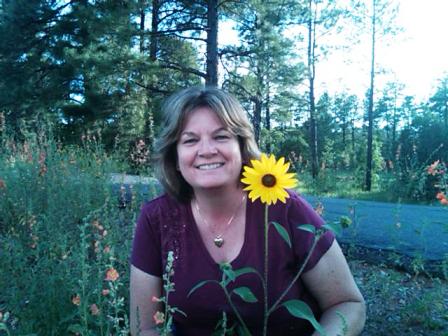 |
|||||||
|
|
|||||||
July 2011 NewsletterWhat´s New at Savon
◄ Back to What´s New At Savon - Monthly Newsletter Home Page Quote Of The Month: “I guess I just prefer to see the dark side of things. The glass is always half empty. And cracked. And I just cut my lip on it. And chipped a tooth.” (Janeane Garofalo, 1964 - Present) Congratulations To: Keeping Fit With Jourdin Hendershot:
Here are a few yoga poses for arthritis: Cobra Cobra stretches the back, chest and shoulders. Start in a prone position. Place your hands next to your chest, palms down. It is important to keep the elbows pulled in toward the body. Pull the shoulders down, toward your hips. On an inhale, lift the chest off of the floor by engaging your back muscles. Only when you feel confident of your form in the pose should you use some of the strength of your arms and hands to push up. To test your form, take the hands an inch off of the floor. This gives you awareness of your back muscles. Hold for five to seven breaths, then release. Mushtika Bandhana (Hand Clenching) This yoga asana is useful mainly for the arthritis of the hand and wrist. Women are generally more prone to osteoarthritis and the same occurs mainly in their early part of the menopause. The Hand Clenching asana, as the name denotes, provides the primary benefit of developing or restoring grip of the hand and strengthening the joints in the hand. To do the Hand Clenching pose, sit comfortably on a chair so that your back is erect. Place your arm in the front at the shoulder level and parallel to the ground. Keep your thumb upwards and make a fist wherein all the fingers are inserted into the thumb. Follow the movement along with your breathing. When you inhale, open your hand and stretch all the five fingers. When you exhale, move your open hand and form a fist. You can repeat this process for 8 – 10 counts. If you have questions you would like to discuss with Jourdin, feel free to drop her an email by clicking here. Grandma's Kitchen With Grandma C.:
Place stew beef in a plastic zip seal bag. Add mustard and season with salt, pepper and garlic salt to taste. Seal the bag and shake to coat the meat. Place meat mixture in frying pan coated with a small amount of oil, brown for 3 or 4 minutes on medium high heat. Place meat mixture in slow cooker. Add onion, celery and beef broth. Cover and cook on high for approx 6 hours. Cook frozen noodles according to package directions. Stir sour cream into meat mixture just before you're ready to serve. Serve over noodles. This is great comfort food & kids love it! If you have a unique recipe that you would like to share, feel free to email her by clicking here. Dry Heat vs Humid HeatYou've probably all heard the saying about Southwest desert heat: "But it's a DRY heat," which is usually meant to imply that dry heat is better than humid heat. Phoenix is both hotter and drier than most other places in the country, and people from more humid places claim that it feels hotter in higher humidity even when the temperature is lower. Let's take a look at how that works.When your body gets hot, it sweats. The heat from your body is dissipated because it's spent turning the water on your skin into vapor. As the sweat evaporates from your body, more sweat takes its place for as long as your body decides that it needs to cool itself down. The advantage is that your body can regulate its temperature. The disadvantage being that you lose water and can dehydrate. So why does it feel hotter in areas of higher humidity? Because when there is already a high concentration of water in the air, your sweat has no place to go. In fact, the water in the air actually condenses on your skin. While you may feel stickier or sweatier in high humid regions, you're actually sweating less. But because the sweat doesn't evaporate, you appear to sweat more. This also means that the process of sweating doesn't cool you down much, and you feel warmer. Safety TipsThere are some safety tips that need to be followed if you're going to be in dry heat. First off, make sure you drink plenty of liquid. A person walking around outside on a 100 plus degree weather summer day can lose about one quart of water per hour, and more if overly active. Secondly, when you begin to lose too much water, your body can heat up faster causing you to suffer from heat exhaustion. Initial symptoms include nausea, dizziness, and lack of sweat (because you're dehydrated).With continued exposure to heat, other symptoms include ringing in the ears, headache, and loss of muscle control. Upon noticing the first symptom, get out of the heat and replenish the body's water immediately. While a humid heat may feel more uncomfortable, it's less likely to cause dehydration. Fun fact about the Fourth of July
Dental Talk - A Member Blog Forum:
These are just a few of the topics. Our blog site contains many other interesting topics. Please join us!! Healthcare ReformThere is a lot of mystery surrounding various health bills signed into law this past year - the biggest one relating to preexisting conditions. They still exist. In January 2014, the carriers will have to cover preexisting conditions (for plans going into effect as of that date). But keep in mind: carriers can only pay out based on what they collect.The CBO (Congressional Budget Office) has indicated that consumers across the board should expect a minimum 30-35% increase in their premiums at that time, in order to accommodate this forced-coverage. It is not typical that government would tell a private business (and that's what insurance is) what to do and how, and it is anticipated that some carriers may close their doors; many small businesses are already indicating they will drop their group plans altogether if forced to provide benefits to part-time personnel. The average consumer has no idea how much group insurance really costs a business and many employers aren't clearing enough profit these days to afford the excess costs. This scenario is only going to get worse. If carriers have to streamline their own costs in order to pay out higher claims (some medications run over $3,000 per month), benefits will have to be stream-lined, too. We expect to see less choices and options, more restrictions in other areas of healthcare and less benefits. By Congress' own admission, this is part of the overall plan to move into national healthcare (socialized medicine). What many consumers don't understand: the government provides the healthcare but does not pay for it - it is 100% paid for by higher taxes. Ask anyone who has lived in England, New Zealand, Italy, France, Australia, Spain, Canada... I have. In several of those countries, the cost of their healthcare is more than half their national debt. Bottom Line: someone always has to pay for it. It will always be the consumer. |
|||||||


